Importance of a Proper Youth Motorcycle Helmet
Why Safety is Non-Negotiable for Young Riders
Safety should be the top priority for young motorcycle riders. A proper youth motorcycle helmet protects the most vulnerable part of the body—the head. In the event of an accident, a helmet reduces the risk of traumatic brain injuries. Young riders are often less experienced and more prone to falls, making helmet use even more important. Wearing a helmet also sets a good safety example for lifelong riding habits.
A high-quality helmet can offer more than just protection in crashes. It also shields young riders from wind, dust, and flying debris. These factors can impair vision or cause distractions while riding. Ensuring your child wears a helmet every time they ride is a simple but critical step to safeguarding their health and well-being.
Key Risks of Riding Without a Helmet
Riding without a helmet significantly increases the risk of severe head injuries. Without proper protection, even a minor collision can lead to dangerous consequences, such as concussions or skull fractures. For young riders, healing from such injuries may take longer and lead to permanent damage.
Another significant risk is road rash or facial injuries caused by sliding or impact. Helmets not only protect the skull but also guard the face and chin. Additionally, not wearing a helmet can result in legal penalties in many areas, as laws often mandate helmet use for children. Parents must ensure their children understand these risks to prioritize helmet use every time they ride.
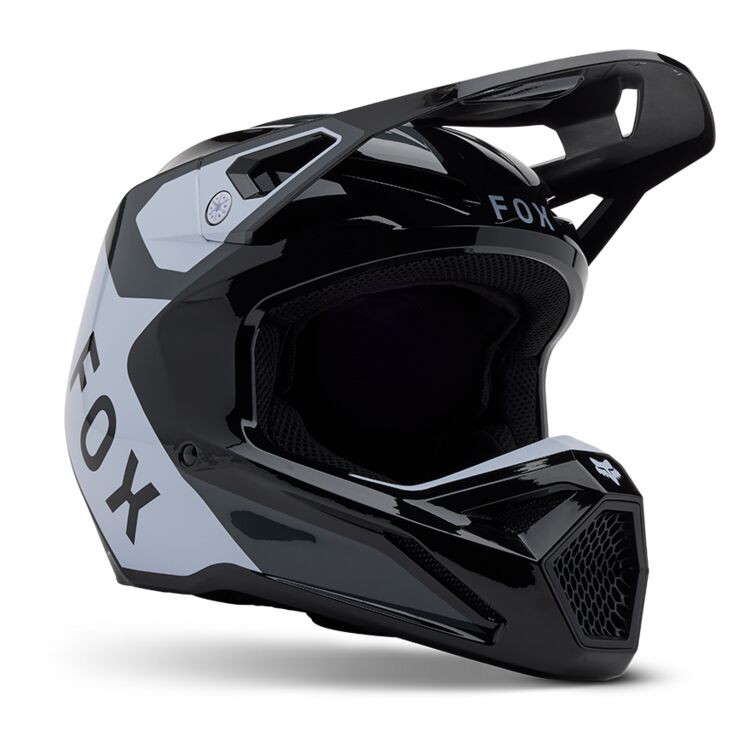
Types of Youth Helmets
Youth motorcycle helmets come in various types. Choosing the right one is essential for safety and comfort. Each type offers specific features, pros, and cons tailored to different riding needs. Below, we outline four popular helmet types.
Full-Face Helmets: Pros and Cons
Full-face helmets offer the most protection for young riders. They cover the entire head, including the face and chin. This design provides excellent safety during crashes.
Pros:
- Maximum head and face protection.
- Superior wind and debris shielding.
- Better noise reduction for a quieter ride.
Cons:
- Can feel heavier than other helmets.
- Less ventilation, possibly causing discomfort in hot weather.
- Can be difficult for kids to put on and remove easily.
Open-Face Helmets: Benefits and Drawbacks
Open-face helmets, also known as 3/4 helmets, leave the face exposed. They cover the top, back, and sides of the head.
Benefits:
- Lighter in weight and easier to wear.
- Better ventilation, making them comfortable for short or leisurely rides.
- Often more affordable than full-face helmets.
Drawbacks:
- Less protection for the face and chin.
- Exposes the rider to wind, dust, and flying debris.
- Lower safety rating in case of an accident.
Modular Helmets: Versatility for Young Riders
Modular helmets combine features of full-face and open-face helmets. They come with a flip-up chin bar for flexibility.
Advantages:
- Dual functionality makes them versatile and convenient.
- Provide better protection than open-face helmets.
- Suitable for both city rides and longer trips.
Disadvantages:
- Heavier due to the flip-up mechanism.
- Expensive compared to open-face helmets.
- May not provide the same safety as a full-face helmet when flipped open.
Dirt Bike Helmets: Ideal for Off-Road Adventures
Dirt bike helmets are specifically designed for off-road use. They feature an extended chin guard and visor.
Strengths:
- Lightweight and well-ventilated design for rough terrains.
- Excellent eye protection when paired with goggles.
- Offers specialized safety for off-road activities.
Weaknesses:
- Not ideal for high-speed road use.
- Lacks built-in face shields, requiring additional goggles.
- Limited noise reduction features.
Selecting the right youth motorcycle helmet depends on the type of riding your child does. Balancing protection, comfort, and practicality is key for an optimal helmet choice.
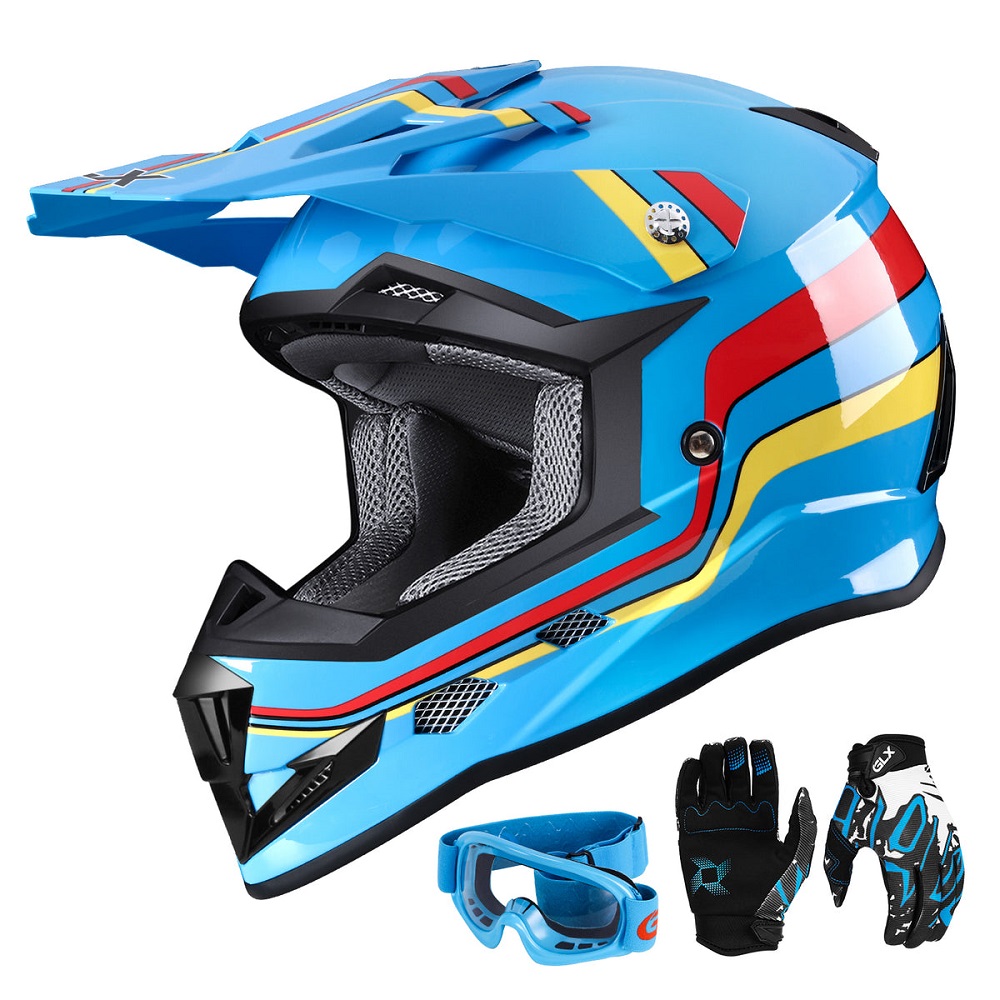
Key Features to Look for in a Youth Helmet
Selecting the right youth motorcycle helmet involves more than choosing a stylish design. Parents and guardians should prioritize essential features that ensure maximum safety, comfort, and durability. Below are the critical characteristics to consider when choosing a helmet for young riders.
DOT and ECE Safety Certifications
Safety certifications like DOT and ECE indicate the helmet meets high protection standards. A helmet with these labels has undergone rigorous testing for impact resistance and overall safety. Always check for these certifications to guarantee reliable protection for your child.
Material Durability and Strength
The outer shell should be made from strong materials like polycarbonate or fiberglass composites. Durable materials protect young riders effectively during collisions. They also ensure the helmet’s longevity under regular use.
Proper Ventilation for Comfort
Ventilation is vital for keeping young riders comfortable during hot weather or long trips. Look for helmets with multiple vents to allow airflow. Good ventilation prevents sweating and makes the ride more enjoyable.
Inner Padding and Fit for Maximum Safety
Soft inner padding cushions the head and absorbs shocks during impacts. The helmet should fit snugly without causing pressure points. Proper padding ensures safety and prevents discomfort while riding.
Weight Considerations for Young Riders
Lightweight helmets reduce strain on the neck and shoulders, especially for younger children. Heavy helmets can cause fatigue during longer rides. Lightweight options balance comfort without compromising protection.
Focusing on these key features helps parents choose a well-rounded helmet. Balancing safety, durability, and comfort ensures the ideal riding experience for young bikers.
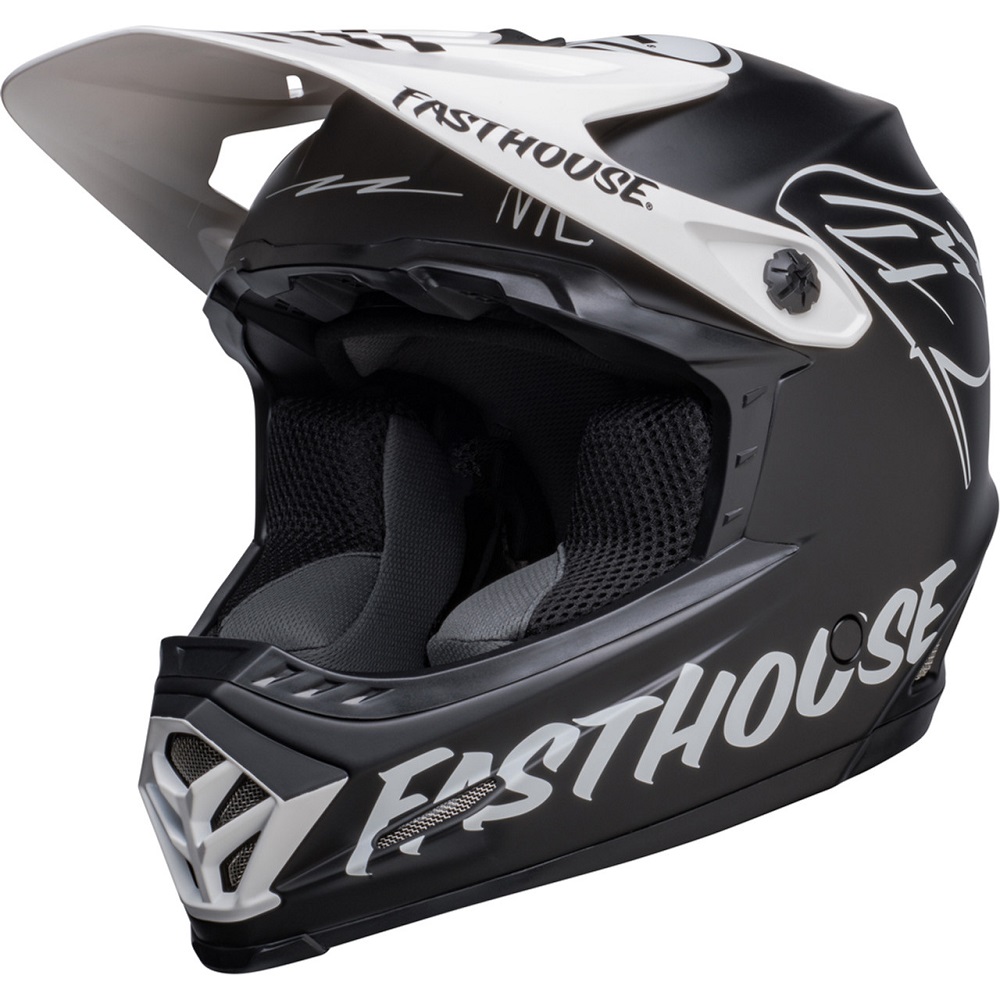
Finding the Right Fit
A well-fitting youth motorcycle helmet is crucial for safety and comfort. An improper fit can reduce the helmet’s ability to protect during an accident. Ensuring the right fit involves accurate measurements, secure straps, and addressing common sizing issues. Below are steps to find the perfect fit for your child.
How to Measure Your Child’s Head
- Use a Flexible Tape Measure: Wrap it around the widest part of your child’s head, above the eyebrows and ears. Ensure the tape is level.
- Record the Measurement: Note the circumference in centimeters or inches as per the helmet size chart.
- Consult the Size Chart: Each helmet brand may have different sizing. Always check the manufacturer’s specific chart.
Proper measurements help parents choose a size that offers maximum comfort and safety. A snug but not overly tight fit is essential.
Adjusting Helmet Straps for Security
- Position the Helmet Correctly: Ensure it sits low on the forehead, covering most of the child’s head.
- Adjust the Straps Under the Chin: The chin strap should be tight enough to prevent the helmet from moving, but not too tight to cause discomfort.
- Check the Side Straps: Ensure they form a “Y” shape under and slightly in front of each ear.
- Verify the Buckle: Make sure it is securely fastened and cannot easily come undone.
Properly adjusted straps keep the helmet in place even during sudden movements or impacts.
Common Fit Issues and How to Fix Them
- Helmet is Too Loose: If the helmet shifts or wobbles, try using additional padding or check for smaller sizes.
- Helmet is Too Tight: If it causes pressure or pain, consider choosing a larger size or adjusting the straps.
- Visor Obstruction: Ensure the visor sits correctly without blocking vision.
- Chin Strap Discomfort: Add padding to reduce irritation or adjust the buckle to a more comfortable position.
Fixing these issues ensures young riders enjoy a safe and comfortable experience. Regularly check the fit as children grow.
Style and Personalization Options
Personalizing a youth motorcycle helmet adds uniqueness and encourages kids to wear it. Helmets with cool designs or useful accessories can enhance their appeal and functionality. Below, we explore some popular design trends and accessory options for young riders.
Popular Designs and Colors for Youth Helmets
- Bright and Vibrant Colors: Neon shades and bold colors improve visibility and stand out on roads.
- Cartoon and Superhero Themes: Popular characters make wearing a helmet fun and exciting for kids.
- Graphic Patterns: Flames, stripes, or camouflage patterns are trendy among young riders.
- Custom Artwork: Some brands or stores offer custom-painted helmets for a personalized touch.
- Metallic Finishes: Shiny or matte metallic designs give a sleek, modern look that kids love.
Encourage your child to choose a design they like. Their preference ensures they are excited to wear the helmet.
Adding Visors, Goggles, or Accessories
- Visors: Built-in or detachable visors shield young riders from sun glare and flying debris.
- Goggles: Ideal for dirt bike helmets, goggles provide extra eye protection in off-road conditions.
- Helmet Stickers: Add stickers or decals for an extra dash of personalization.
- Communication Devices: Intercom systems let parents stay connected to their kids while riding.
- Helmet Covers: Fun covers, like animal ears or spikes, add personality to plain helmets.
Accessories enhance both style and practicality, making the helmet more versatile. Always ensure that any added feature doesn’t compromise safety or comfort.

Tips for Maintaining and Replacing a Youth Helmet
Proper maintenance and timely replacement of a youth motorcycle helmet are essential for safety and durability. A well-maintained helmet not only lasts longer but also continues to provide optimal protection. Below are key tips for keeping your child’s helmet in top condition and knowing when it’s time to replace it.
Cleaning and Maintenance Guidelines
Keeping a helmet clean helps maintain its functionality and prolongs its lifespan. Follow these steps:
- Clean the Exterior: Use a mild soap and water solution with a soft cloth. Avoid harsh detergents.
- Wash the Interior Padding: Many helmets have removable, washable liners. Use mild soap and air-dry completely.
- Clean the Visor: Gently wipe it with a microfiber cloth to prevent scratches.
- Avoid Strong Chemicals: Do not use solvents or harsh chemicals as they can damage the helmet’s outer shell.
- Inspect for Damage: Regularly check for cracks, dents, or loose parts. Replace damaged parts immediately.
- Store Properly: Keep the helmet in a cool, dry place away from direct sunlight.
Routine cleaning ensures the helmet remains safe, fresh, and comfortable for young riders.
Helmet Lifespan and When to Replace It
Helmets wear out over time or after certain events, reducing their safety effectiveness. Here’s when to replace a youth motorcycle helmet:
- After an Accident: Replace it immediately, even if there’s no visible damage.
- Visible Wear and Tear: Cracks, dents, or fraying straps are signs it’s time for a new helmet.
- Age of the Helmet: Most helmets should be replaced every 5 years due to material degradation.
- Comfort Changes: Replace the helmet if it becomes loose or uncomfortable as your child grows.
- Lost Certifications: If safety certification labels are no longer visible, consider replacing the helmet.
Replacing helmets proactively ensures the best safety for young riders. Educate your child about proper helmet care practices to make the most of their helmet’s lifespan.
Leading Brands and Helmet Options
Choosing a high-quality youth motorcycle helmet is vital for safety and comfort. Several trusted brands offer reliable helmets with great features and designs that suit young riders. Below, we look at some leading brands and discuss helmet options based on budget.
Top Youth Motorcycle Helmet Brands to Consider
- Bell Helmets: Bell is famous for its durable, lightweight helmets. Their designs are both safe and stylish.
- HJC Helmets: HJC offers helmets with excellent ventilation and DOT certifications. They are ideal for long rides.
- Shark Helmets: Shark produces helmets with advanced safety features and intricate designs loved by kids.
- Fox Racing: Fox Racing specializes in dirt bike helmets for off-road adventures. They excel in ventilation and comfort.
- LS2 Helmets: LS2 provides affordable helmets with great strength and ECE certifications. They balance quality and price.
These brands focus on safety, durability, and appealing designs, making them perfect for young riders.
Budget-Friendly vs. Premium Helmet Choices
- Budget-Friendly Helmets:
- Affordable options often provide basic safety features like DOT certifications.
- Lightweight designs with minimal accessories ensure comfort for short rides.
- Brands like LS2 and HJC excel in creating value-for-money helmets.
- Premium Helmets:
- Higher-priced helmets offer advanced protection, including multi-layer shell construction.
- Premium models often feature Bluetooth compatibility, noise reduction, and custom designs.
- Bell, Shark, and Fox Racing helmets provide superior comfort for regular riders.
Whether choosing budget-friendly or premium helmets, prioritize safety certifications and features over price. Encourage kids to select helmets they like to ensure regular use.
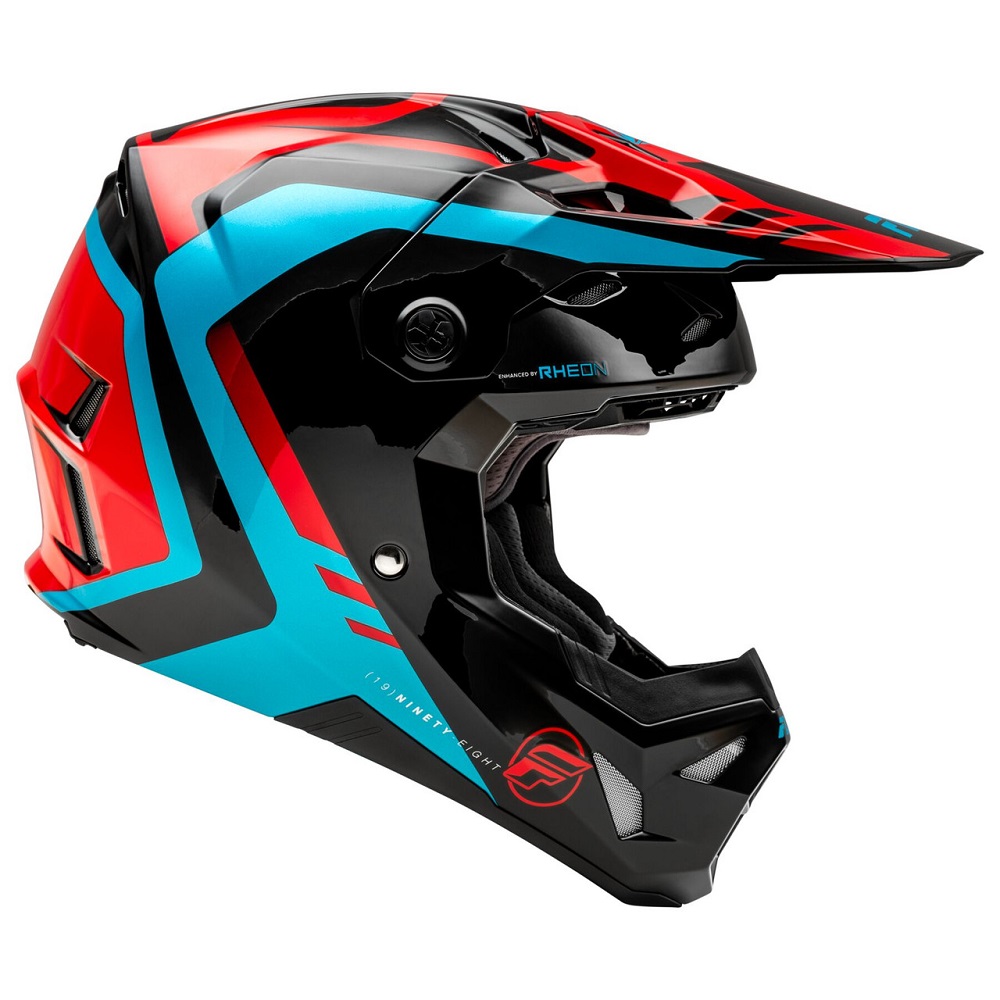
Final Tips for Parents and Guardians
Educating Kids About Helmet Safety
Teaching kids about helmet safety is crucial. Explain why helmets protect against head injuries. Share real-life examples to demonstrate the importance of wearing helmets. Emphasize that safety rules apply every time they ride, no matter how short the trip.
Make wearing helmets non-negotiable, setting it as a rule before riding. Engage children by allowing them to select their preferred helmet design or color. Foster understanding that their choices can save lives. Provide reminders about powerful safety reasons regularly.
Balancing Style, Comfort, and Protection
When choosing a youth motorcycle helmet, focus on safety over fashion. Look for DOT or ECE certifications. Ensure the helmet fits snugly without discomfort while offering strong protection.
Consider lightweight options if your child complains about heavy helmets. Pair safety features with cool designs to make helmets more appealing. Include accessories like visors or stickers to improve style and functionality.
Balance protection, comfort, and personalization to encourage consistent helmet use. Prioritize their health and safety while respecting their preferences whenever possible.
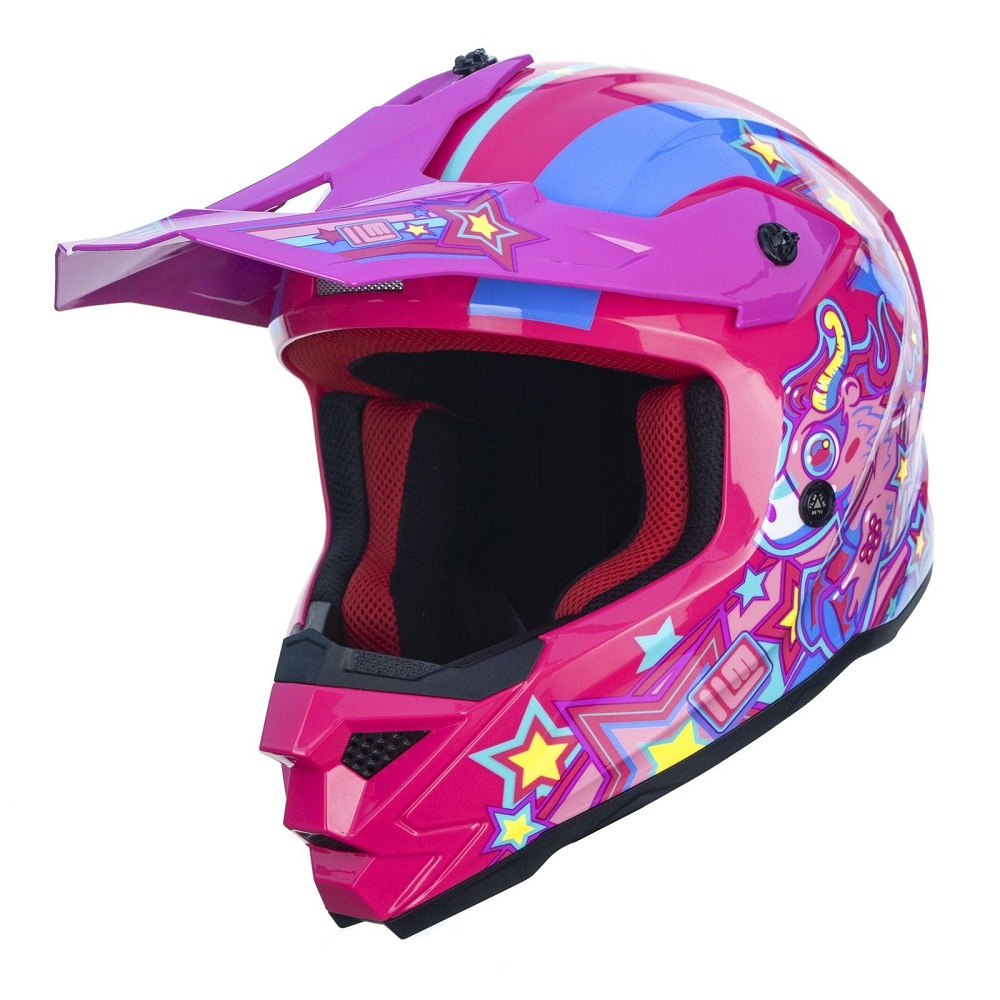
Leave a Reply